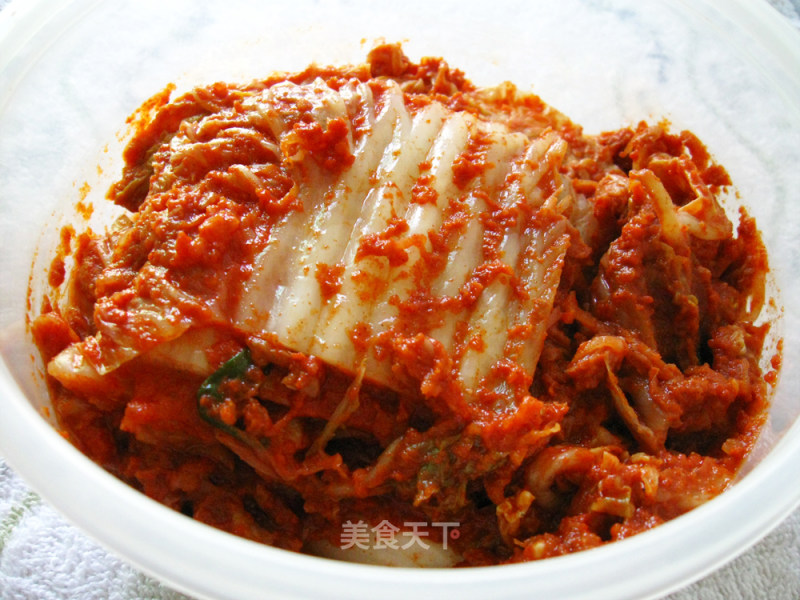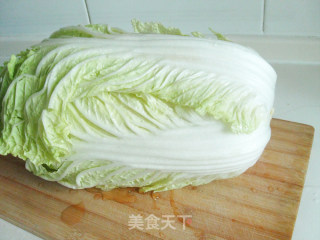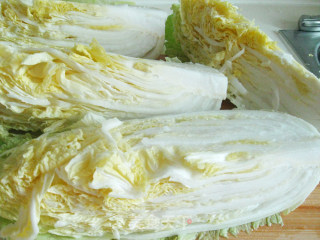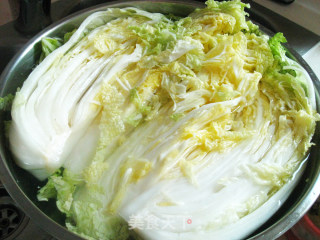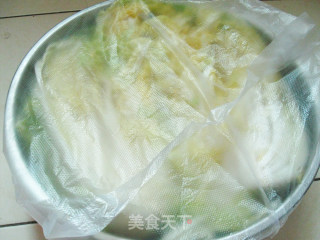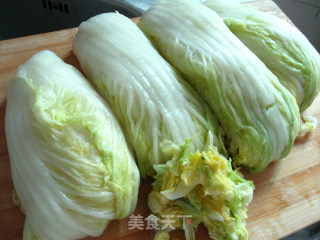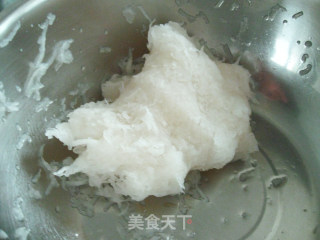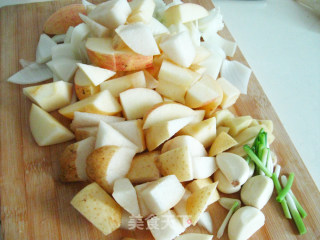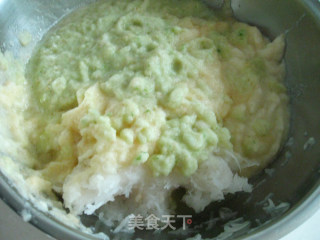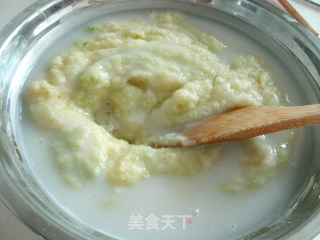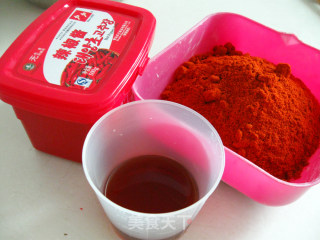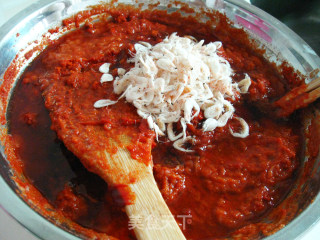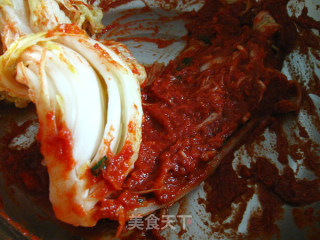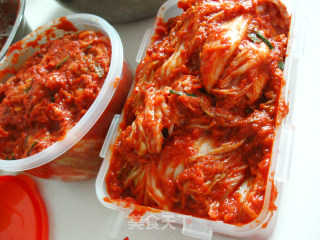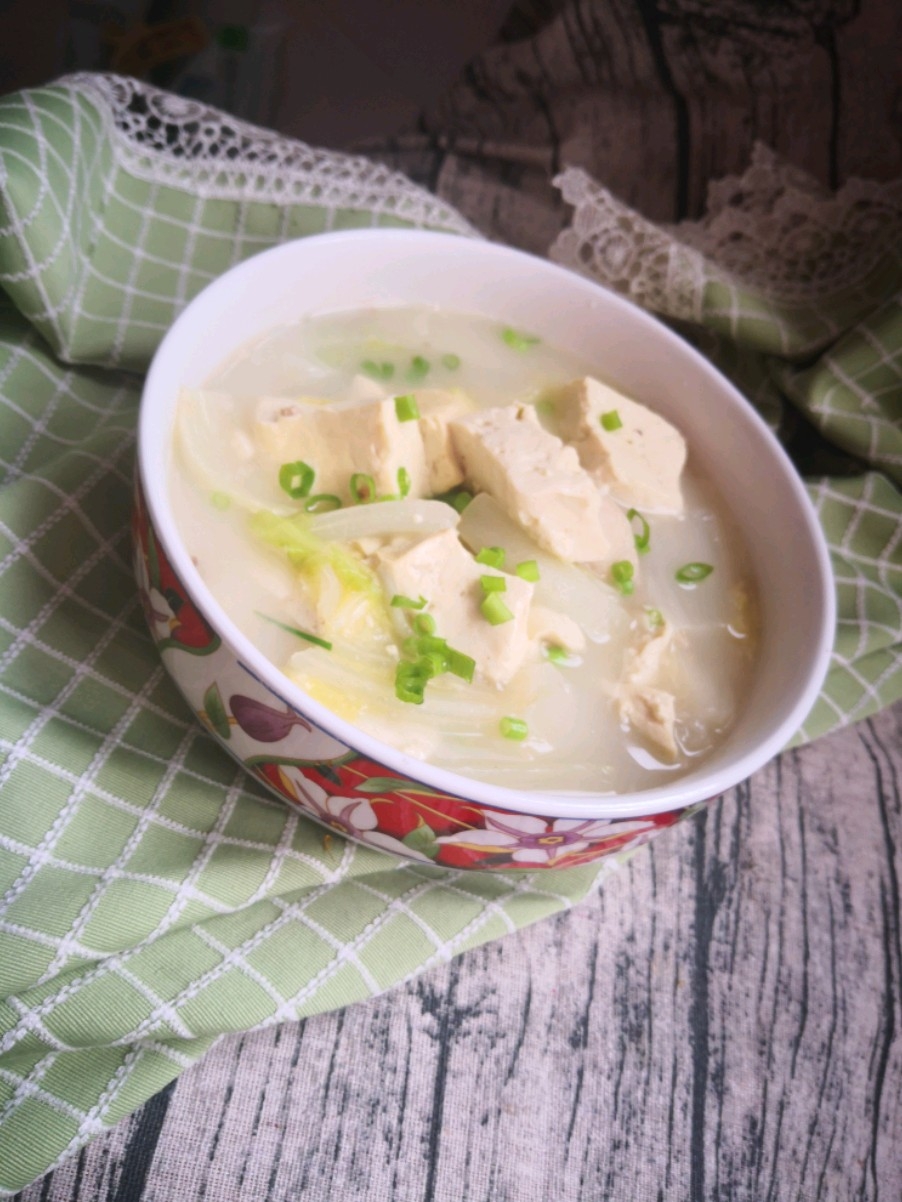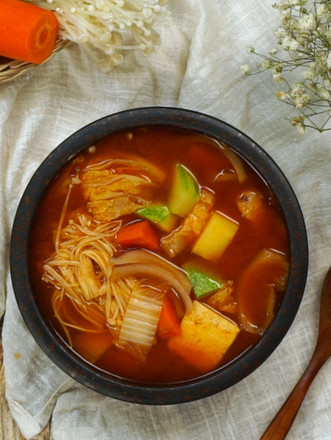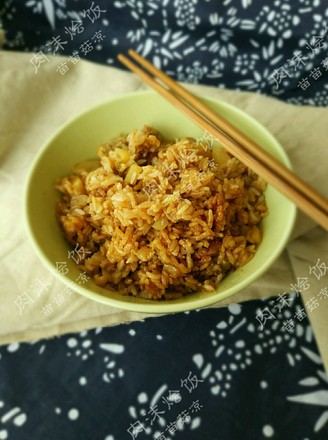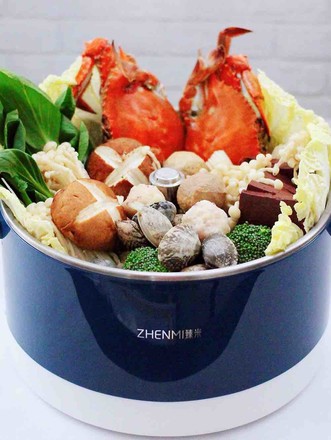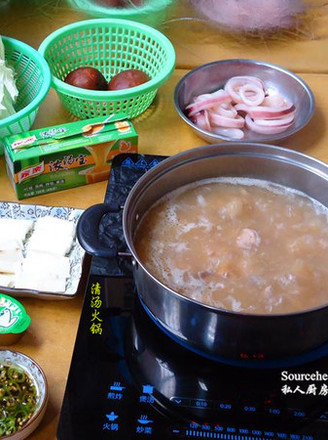Kimchi
1.
One piece of Chinese cabbage is cleaned
2.
Cut the Chinese cabbage into quarters, and evenly spread 80 grams of salt on the roots of the Chinese cabbage
3.
Put water in the basin, dissolve another 80 grams of salt, and dip the salted Chinese cabbage into the basin
4.
Cover the pot with a bag, press heavy objects on it, don't let the Chinese cabbage float, and marinate at room temperature for 10 hours
5.
Take out the marinated Chinese cabbage, rinse well, squeeze the water and set aside
6.
Add 50g of glutinous rice flour to 500g of water (1:10), mix well, then heat on a low heat, and stir while boiling; cook until a paste-like viscous state, turn off the heat, let cool until completely cooled for later use.
7.
Shred the white radish, add 10 grams of salt to marinate for about 10 minutes, rinse and squeeze the water for later use
8.
Cut apples, pears, green onions, and ginger into small pieces, pat a little green onions, and cut into small pieces
9.
Use a food processor to puree the cut materials and put them in the shredded radish
10.
Pour the cold glutinous rice paste into the shredded radish and mix well
11.
Korean chili noodles, fish sauce and Korean chili sauce
12.
Add fish sauce, chili noodles, chili sauce, shrimp skin and mix well
13.
Then add the shallots and stir to form a uniform chili paste
14.
Spread the chili sauce layer by layer on the cabbage
15.
Put the coated Chinese cabbage in a larger fresh-keeping box and seal it. Place it at room temperature in summer for 1 day. After 2-3 days in winter, put it in the refrigerator for about 7 days before eating.

